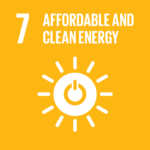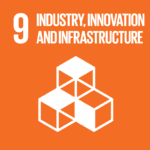By 2045, the green economy index is expected to reach 90.65 percent. Concurrently, the plan aims for a cumulative 51.51 percent reduction in greenhouse gas emissions and an annual reduction of 80.98 percent.
JAKARTA — Indonesia’s Ministry of National Development Planning (Bappenas) has unveiled ambitious plans to leverage green economy interventions to boost the country’s average Gross Domestic Product (GDP) growth to 6.22 percent between 2025 and 2045.
Priyanto Rohmatullah, Director of Environment at Bappenas, outlined this strategy during a webinar on Indonesian Carbon Trading and Exchange on Tuesday (23/7). He emphasized that the green economy initiative is part of a dual effort to stimulate economic growth while reducing greenhouse gas emissions.
RELEVANT SUSTAINABLE GOALS




The National Long-Term Development Plan (RPJPN) 2025-2045
“We need the impetus of green economy interventions. This is expected to drive GDP growth to 6.2 percent,” Rohmatullah stated, aligning with the government’s target of 6-7 percent growth outlined in the National Long-Term Development Plan (RPJPN) 2025-2045.
The ministry’s vision extends beyond economic growth. Rohmatullah revealed plans for low-carbon development and climate resilience, coupled with policy interventions in sectors such as energy and waste management. These efforts aim to achieve net-zero emissions by 2060 or earlier.
“We hope to gain support from all community members and other parties, as this won’t be easy. There will be economic activities in the coming period that we need to balance with emission reduction efforts,” he added.
The RPJPN 2025-2045 sets ambitious environmental targets. By 2045, the green economy index is expected to reach 90.65 percent. Concurrently, the plan aims for a cumulative 51.51 percent reduction in greenhouse gas emissions and an annual reduction of 80.98 percent.
Rohmatullah further elaborated that Indonesia aims to achieve a 93.5 percent reduction in greenhouse gas emissions by 2045. This goal is supported by efforts to enhance resilience against climate change-induced disasters.
“We hope to reduce losses by striving for emission reductions. With climate-resilient development, we aim to minimize GDP losses, generally aligning with our Golden Indonesia 17 objectives,” Rohmatullah explained.
Reflecting on the current Medium-Term National Development Plan (RPJMN) 2020-2024, Rohmatullah expressed satisfaction with Indonesia’s progress in reducing greenhouse gas emissions. By 2024, the country is on track to achieve a 27.3 percent reduction in greenhouse gas emissions, with an emission intensity of 31.6 percent.
However, he acknowledged that challenges remain. “There are many tasks ahead, such as continuing to develop more accurate methods for measuring emissions. We are continuously working on this to ensure more precise measurement results in the future,” Rohmatullah concluded.
You may also be interested in :
With Renewables, Japan Could Be Energy-Independent by 2060 : Rystad Energy CEO



